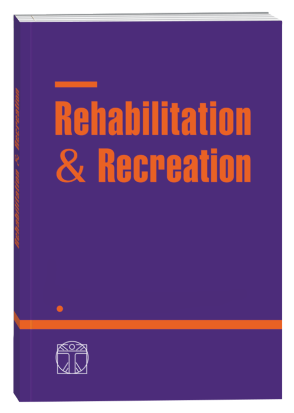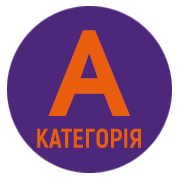EFFECT OF PHYSICAL THERAPY ON ANTHROPOMETRIC PARAMETERS AND BODY COMPOSITION OF YOUNG PEOPLE WITH POSTURAL DISORDER, FLATFOOT AND OBESITY
DOI:
https://doi.org/10.32782/2522-1795.2023.15.11Keywords:
physical therapy, rehabilitation, postural disorders, obesity, flat feet, students.Abstract
Purpose: to assess the effectiveness of physical therapy correction of anthropometric parameters, associated with excessive development of adipose tissue, and body composition in young people (students) with postural disorders, flat feet, and obesity. Material. 110 young people (1st year students) were examined. The control group consisted of normal body weight students, normal posture and no signs of flat feet. The comparison group consisted of students with obesity, postural disturbances in the sagittal plane, and flat feet. They were divided into two groups: group 1 - students who expressed a desire to correct the diagnosed disorders independently and / or in self-selected rehabilitation institutions and / or during classroom physical education classes. Group 2 consisted of students undergoing rehabilitation using a developed physical therapy program that lasted 6 months; included kinesitherapy, massage, kinesiological taping, nutrition modification, rehabilitation training. The effectiveness of the program was evaluated by the dynamics of anthropometry (height, weight, body mass index, waist and hip circumferences and their ratio) and body composition (fat, muscle tissue and water content, visceral fat), determined by the bioimpedance method. The results. In students with postural disorders, flat feet and obesity, a significant deterioration of anthropometric parameters (increase in body weight, body mass index, waist and hip circumferences, their ratio) and component composition of the body (decrease in muscle mass and water, increase in fat mass and visceral fat) was revealed) relative to their peers). The developed program of physical therapy with the use of functional training on the "РROSEDOS" platform, massage, kinesiological taping, nutritional modification, rehabilitation training revealed a statistically significantly better effect on all studied anthropometric characteristics and body composition in students compared to the results of individuals who practiced independently or by non-specialized programs (р<0.05). Conclusions. During their studies in higher education institutions, students with health disorders need increased attention in the context of identifying and correcting pathological changes that are a consequence of chronic non-infectious diseases (in particular, obesity and conditions associated with it), primarily by non-medicinal means, in particular , physical therapy.
References
Аравіцька М. Г. Аналіз індивідуальних шляхів покращення комплаєнсу хворих ожирінням як аспект визначення цілей реабілітації. Український журнал медицини, біології та спорту. 2019. 6 (22). С. 362-369 DOI: 10.26693/jmbs04.06.362
Аравіцька М.Г. Визначення ефективності впровадження програми фізичної терапії для хворих ожирінням ІІІ ступеня за динамікою метаболічних параметрів. Art of Medicine. 2019. № 4(12). С. 6-11. DOI: 10.21802/artm.2019.4.12.6.
Балакірєва О.М., Бондар Т.В. Соціальна обумовленість та показники здоров’я підлітків та молоді: за результатами соціологічного дослідження в межах міжнародного проекту «Здоров’я та поведінкові орієнтації учнівської молоді». Київ: Поліграфічний центр «Фоліант». 2019. 127 с.
Голод Н.Р., Аравіцька М.Г. Вплив авторської реабілітаційної програми з врахуванням порушень рухової дієздатності на функціональний стан внутрішніх органів студенток спеціальної медичної групи. Фізична активність, здоров’я і спорт. 2015. 2 (20). C. 44-51.
Behringer M, Gruetzner S, McCourt M, Mester J. Effects of weight-bearing activities on bone mineral content and density in children and adolescents: a meta-analysis. J Bone Miner Res. 2014. 29(2). С. 467-478. doi:10.1002/jbmr.2036
Fintini D, Cianfarani S, Cofini M, et al. The Bones of Children With Obesity. Front Endocrinol (Lausanne). 2020. 11. С. 200. doi:10.3389/fendo.2020.00200
Kansra AR, Lakkunarajah S, Jay MS. Childhood and Adolescent Obesity: A Review. Front Pediatr. 2021. 8. Р. 581461. doi:10.3389/fped.2020.581461
Parratte S, Pesenti S, Argenson JN. Obesity in orthopedics and trauma surgery. Orthop Traumatol Surg Res. 2014. 100 (1 Suppl). S91- S97. doi:10.1016/j.otsr.2013.11.003
PROSEDOS. Powered by Gray’s Institute [web source]. Retrieved from: https://procedos. com/
Salus M, Tillmann V, Remmel L, et al. Serum Osteocalcin, Sclerostin and Lipocalin-2 Levels in Adolescent Boys with Obesity over a 12-Week Sprint 2023 May 8. doi:10.3390/ children10050850
Specker, B., Thiex, N. W., & Sudhagoni, R. G. (2015). Does Exercise Influence Pediatric Bone? A Systematic Review. Clinical orthopaedics and related research, 473(11), 3658–3672. https://doi.org/10.1007/ s11999-015-4467-7
Steinberg, N., Nemet, D., Pantanowitz, M., & Eliakim, A. (2018). Gait Pattern, Impact to the Skeleton and Postural Balance in Overweight and Obese Children: A Review. Sports (Basel, Switzerland), 6(3), 75. https://doi.org/10.3390/ sports6030075
Tanita. Inner Scan Segmental Body Composition Monitor. Manual. Available from: https://tanita-ua.com/system/0010/6464/ BC-601.pdf
WHO. Healthy diet [web source]. Retrieved from: https://www.who.int/newsroom/ fact-sheets/detail/healthy-diet
World Health Organization. Obesity and Overweight. World Health Organization; Geneva, Switzerland: 2021. Available online: https://www.who.int/news-room/fact-sheets/ detail/obesity-and-overweight.
Downloads
Published
How to Cite
Issue
Section
License

This work is licensed under a Creative Commons Attribution-NonCommercial-NoDerivatives 4.0 International License.












